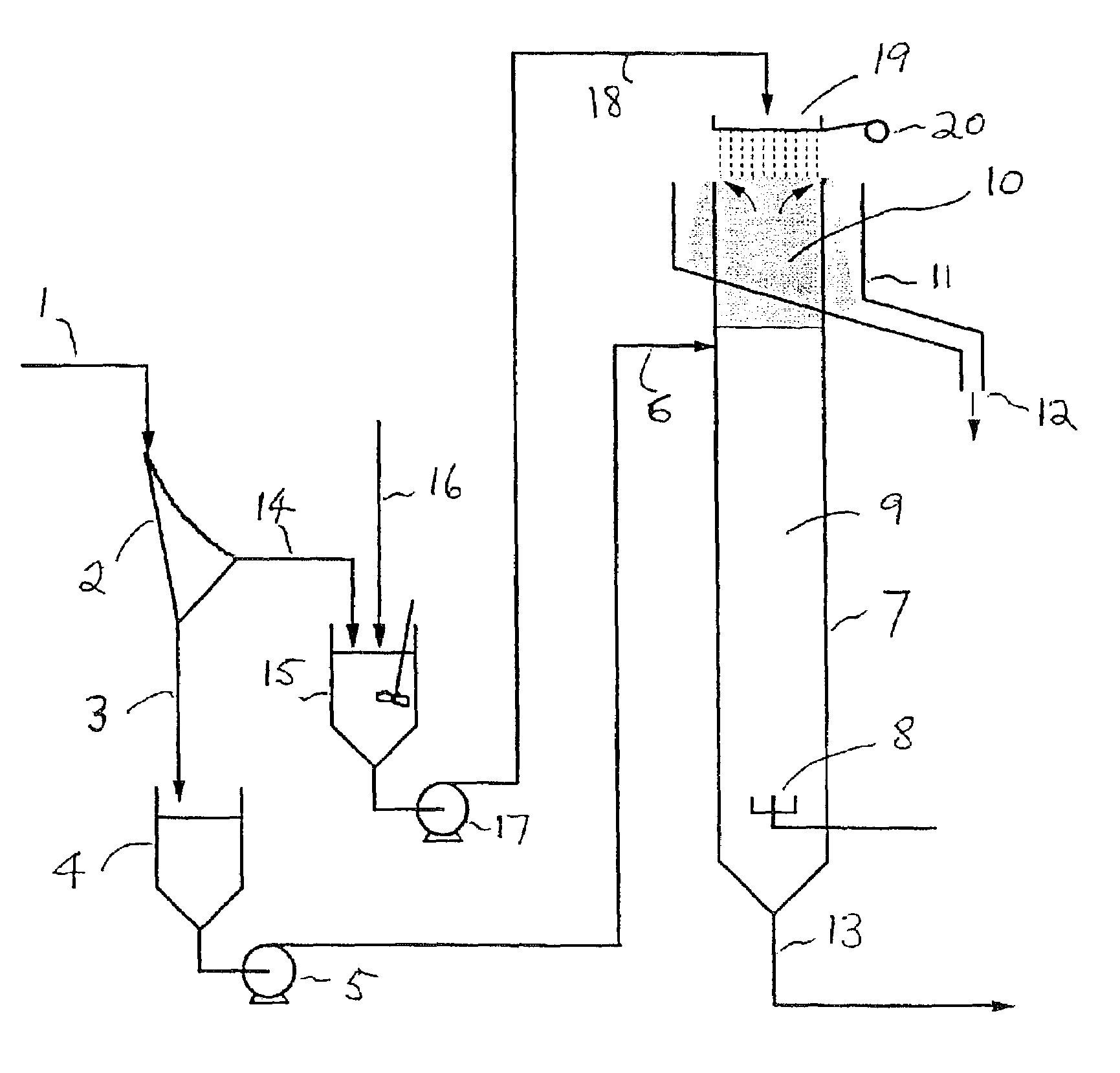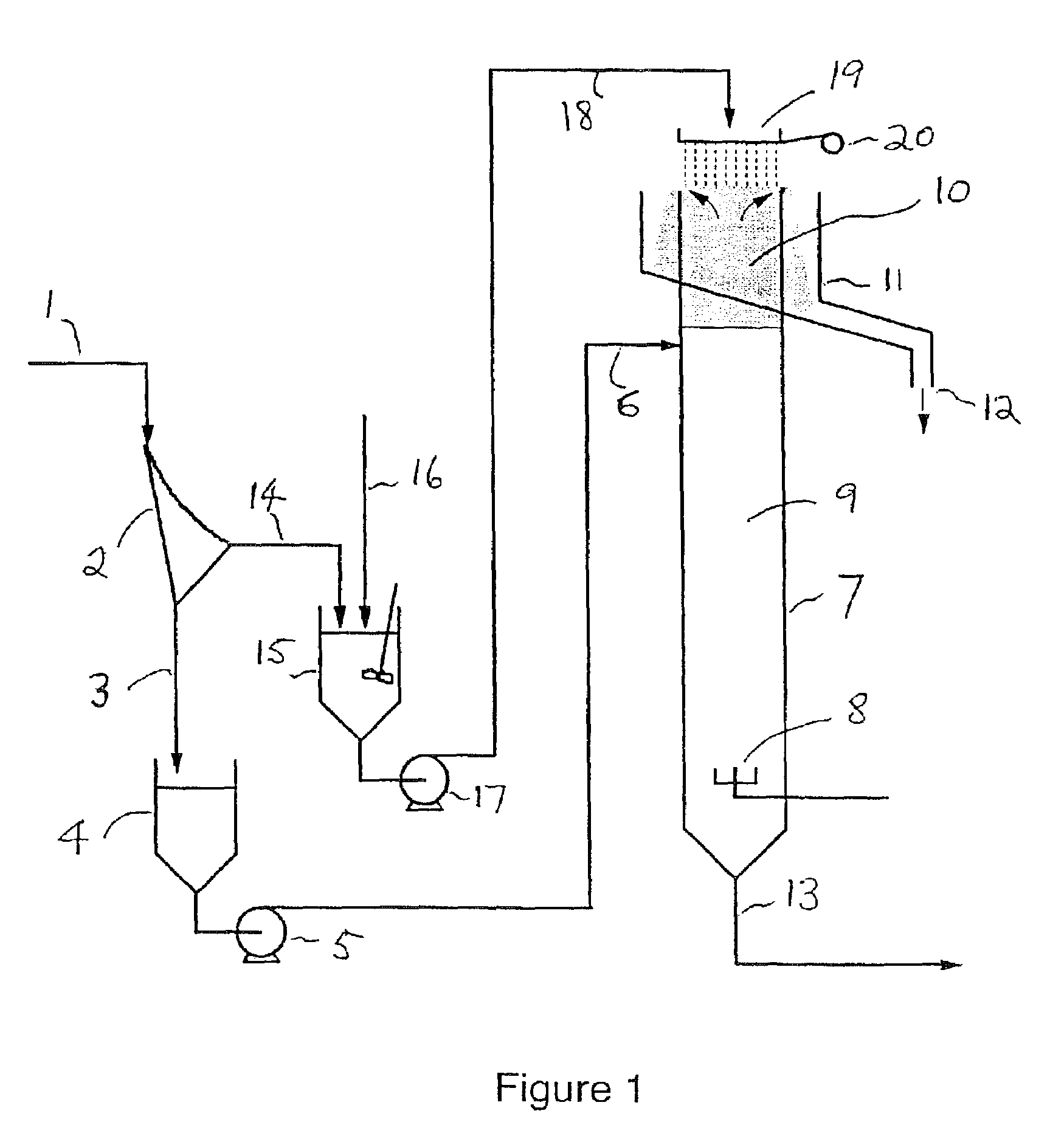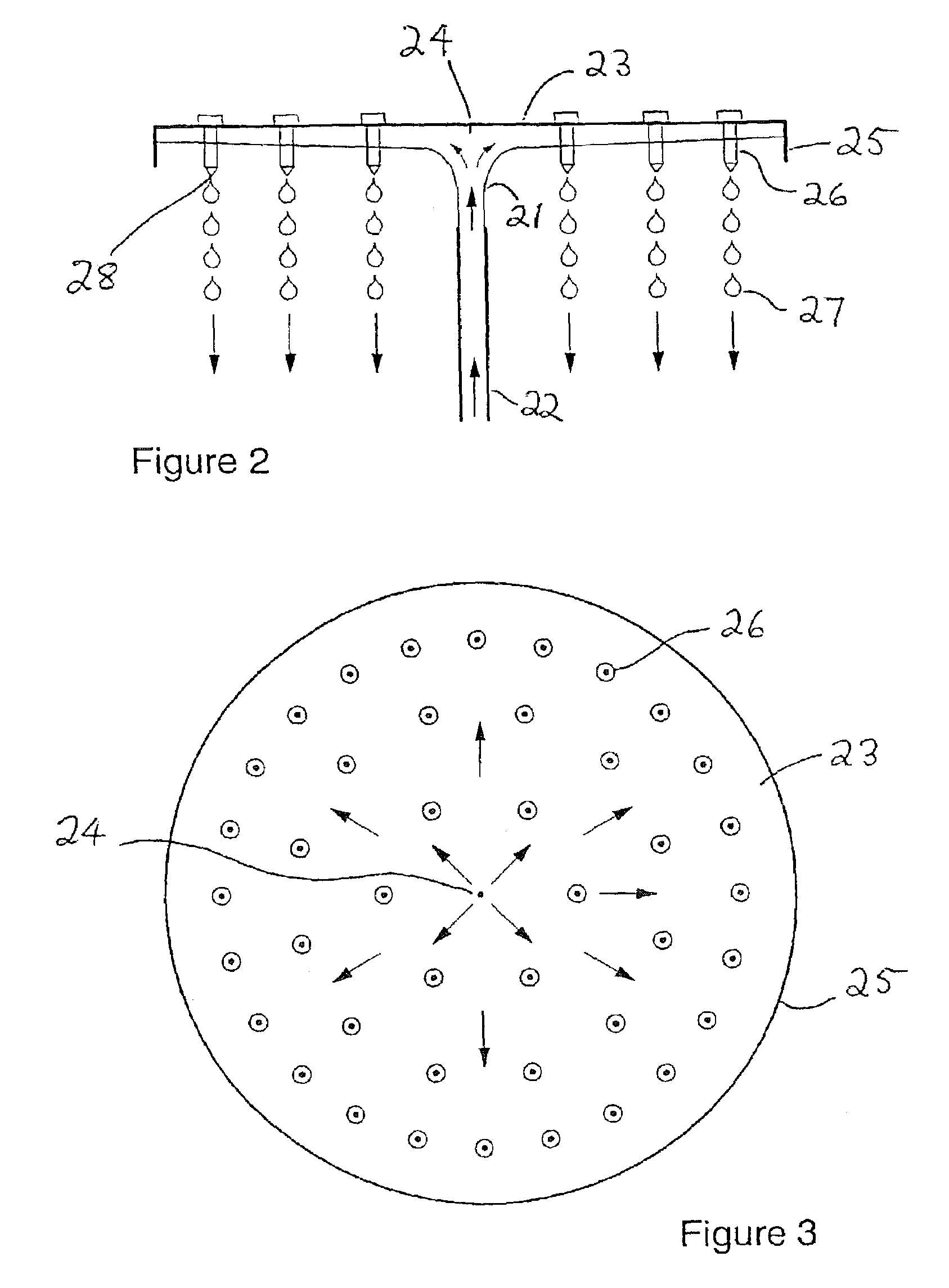Froth flotation process and apparatus
a flotation process and flotation apparatus technology, applied in the direction of spray nozzles, solid separation, wet separation, etc., can solve the problems of low efficiency of recovery of valuable particles above this size, uneven distribution of coarse particles in the froth, and ineffectiveness, so as to reduce the blocking of holes in the tray
- Summary
- Abstract
- Description
- Claims
- Application Information
AI Technical Summary
Benefits of technology
Problems solved by technology
Method used
Image
Examples
example
[0070]A plant was modified in accordance with the invention, and a feed of coal containing a wide range of particle sizes was fed to the unit. The suspension of feed coal at 5 percent W / W was conditioned with diesel oil (1 kg / tonne) and MIBC (methyl isobutyl carbinol) frother (15 gm / tonne of feed liquid). A sieve bend of nominal aperture 500 μm was used to separate the feed particles. The mass of feed above 500 μm in diameter was 16 percent. The coarse coal was distributed over the froth in the wash water. The superficial velocity of the air in the flotation cell (JG) was 1.2 cm / s, and the superficial velocity of the wash water applied to the cell (JL) was 1.1 cm / s. Analysis of the various streams on a size-by-size basis gave the results shown in Table 1. The recovery of the coarse combustibles was very high, almost matching the recoveries of the sub-500 μm particles.
[0071]
TABLE 1SizeSizeConcentrateTailingsMassCombustiblesUnderOverFeedAshAshYieldYieldμmμmAsh%%%%>20006.823.9727.33889...
PUM
 Login to View More
Login to View More Abstract
Description
Claims
Application Information
 Login to View More
Login to View More - R&D
- Intellectual Property
- Life Sciences
- Materials
- Tech Scout
- Unparalleled Data Quality
- Higher Quality Content
- 60% Fewer Hallucinations
Browse by: Latest US Patents, China's latest patents, Technical Efficacy Thesaurus, Application Domain, Technology Topic, Popular Technical Reports.
© 2025 PatSnap. All rights reserved.Legal|Privacy policy|Modern Slavery Act Transparency Statement|Sitemap|About US| Contact US: help@patsnap.com



